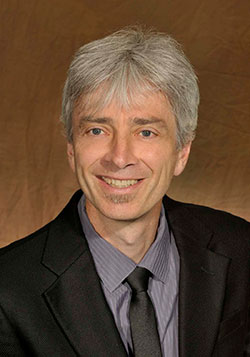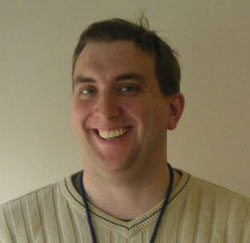Sustained In Situ Detoxification of Priority Chloroorganic Pollutants
Sponsored by: U.S. EPA, Office of Superfund Remediation and Technology Innovation (OSRTI)
Archived: Monday, March 13, 2017
Sustained In Situ Detoxification of Priority Chloroorganic Pollutants
2017-03-13
U.S. EPA, Office of Superfund Remediation and Technology Innovation (OSRTI)
Contaminated site cleanup and environmental stewardship are costly tasks and continued research and innovation can lower the financial burden to site owners and to the taxpayer. A variety of technologies addressing groundwater contamination emerged and have been implemented. Bioremediation takes advantage of naturally occurring microorganisms that detoxify contaminants and in situ implementation of this approach promises to meet cleanup goals at reasonable costs. While biostimulation and bioaugmentation have been successfully applied at numerous sites, the current approaches should be considered brute-force, and more refined treatment (i.e., precision bioremediation) will result in a similar reduction of contaminant concentrations at substantially lower capital investment and lesser environmental impacts. Progress in understanding of the microbiology contributing to chlorinated solvent detoxification under anoxic conditions serves as an example how investments in fundamental research and translational efforts can advance bioremediation from an empirical practice to an approach with predictable outcomes.
Accessibility, Recording, and Content Disclaimer
Rehabilitation Act Notice for Reasonable Accommodation
It is EPA's policy to make reasonable accommodation to persons with disabilities wishing to participate in the agency's programs and activities, pursuant to the Rehabilitation Act of 1973, 29 U.S.C. 791. Any request for accommodation should be made to Michael Adam at 703-603-9915 or adam.michael@epa.gov, preferably one week or more in advance of the webinar, so that EPA will have sufficient time to process the request. EPA would welcome specific recommendations from requestors specifying the nature or type of accommodation needed. Please note that CLU-IN provides both alternate phone call-in options and closed captioning for all webinars, and requests for these specific accommodations are not necessary.
Webinar Recording
By participating in this CLU-IN webinar, you automatically agree to authorize recording of audio and visual content presented during this live event and consent to subsequent use of this recording in the public domain by the U.S. Environmental Protection Agency. This recording may include questions, comments and poll responses provided by you during the live event in addition to your name, voice, image or likeness. This recording will be made available after the conclusion of the live event as part of the CLU-IN webinar archives, and will remain available indefinitely. If you do not wish to consent to the recording, please do not join the live event, and contact Jean Balent at 202-566-0832 or balent.jean@epa.gov to discuss your concerns.
Content Disclaimer
This webinar is intended solely to provide information to the public. The views and opinions expressed as part of this webinar do not necessarily state or reflect those of the U.S. Environmental Protection Agency. It is not intended, nor can it be relied upon, to create any rights enforceable by any party in litigation with the United States, or to endorse the use of products or services provided by specific vendors. With respect to this webinar, neither the United States Government nor any of their employees, makes any warranty, express or implied, including the warranties of merchantability and fitness for a particular purpose, or assumes any legal liability or responsibility for the accuracy, completeness, or usefulness of any information, apparatus, product, or process disclosed, or represents that its use would not infringe privately owned rights.
Presenter:
 Frank E. Löffler, University of Tennessee and Oak Ridge National Laboratory (frank.loeffler@utk.edu or 865-974-4933)
Frank E. Löffler, University of Tennessee and Oak Ridge National Laboratory (frank.loeffler@utk.edu or 865-974-4933)
- Received M.S. and Ph.D. degrees in Microbiology in Germany (University of Hohenheim and Technical University Hamburg-Harburg)
- Was awarded a Feodor-Lynen fellow from the Alexander von Humboldt-Foundation to conduct research in the Center for Microbial Ecology at Michigan State University (1994-1998)
- Assistant Professor in the School of Civil & Environmental Engineering at the Georgia Institute of Technology in Atlanta, where was promoted to the ranks of Associate and Full Professor (1999-2010)
- Since 2010, he is Governor's Chair Professor at the University of Tennessee and Oak Ridge National Laboratory with appointments in the Department of Microbiology, the Department of Civil & Environmental Engineering, and ORNL's Biosciences Division.
- Since 2016, he directs the Center for Environmental Biotechnology at the University of Tennessee
- Dr. Löffler has done extensive work in the field of contaminant degradation, and one focal area has been the microbial detoxification of chlorinated solvents in anoxic aquifers.
- Today, he will present new research findings that can ultimately improve in situ bioremediation efforts
Moderator:
 Michael Adam, U.S. EPA Technology Innovation and Field Services Division (adam.michael@epa.gov or 703-603-9915)
Michael Adam, U.S. EPA Technology Innovation and Field Services Division (adam.michael@epa.gov or 703-603-9915)
As a Triad advocate, Mike directed the final production of the Management and Interpretation of Data Under a Triad Approach. For the Technology Innovation Program (TIP), Mike serves as POC for various issues and initiatives such as Vapor Intrusion, Decision Support Tools, and the Measurement and Monitoring Technologies for the 21st Century initiative; and is part of the CLUIN management team. Mike has graduate degrees in Plant Physiology (2000, Iowa State) and Environmental Engineering (2003, Nebraska-Lincoln), and was a staff Research Assistant in Environmental Soil Science at Nebraska-Lincoln before joining the Technology Innovation Program at the EPA in late 2004.
Webinar Slides and References:
Webinar Slides and References:
Additional Resources:
- These materials will be available by Monday, March 13, 2017
If you have a suggested topic or idea for a future CLU-IN internet seminar, please contact:
Technology Integration and Information Branch
PH: 202-566-0832 | Email: balent.jean@epa.gov
Technology Integration and Information Branch
PH: 202-566-0875 | Email: adam.michael@epa.gov





